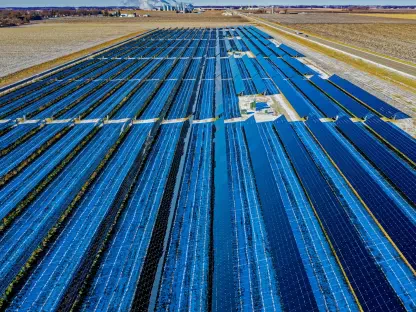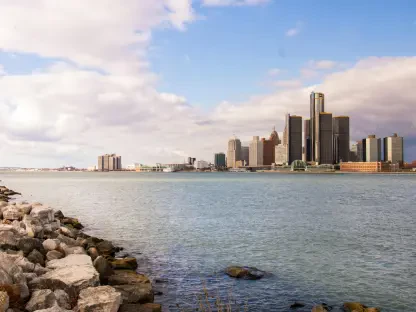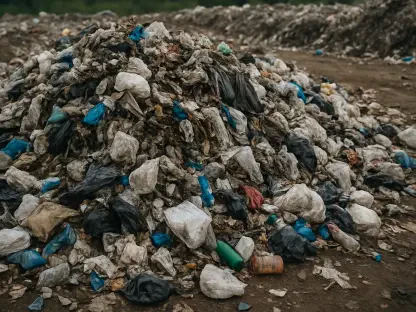In an urgent public health announcement, the National Weather Service alerted residents of New York City, including all its boroughs and outlying areas like Rockland and Westchester counties, about deteriorated air quality. This alert, in effect until the subsequent Monday evening, has been prompted by increased levels of ground-level ozone expected to push the Air Quality Index beyond the threshold of 100. Such conditions present notable health risks, especially for vulnerable groups. This alert underscores the imperatives of safeguarding public health amidst heightened pollution. Sensitive populations, including children, the elderly, and those with pre-existing heart and respiratory conditions, must heed particular caution. The advisory calls for reducing exposure to outdoor air during the alert, especially in areas with poor air circulation. More than just a warning, the guidance provided emphasizes practical steps individuals and communities can take to protect themselves and others during this hazardous period.
Health Implications and Recommendations
Ground-level ozone behaves as a harmful air pollutant, significantly impacting lung function and inflaming airways. Recent measurements suggest that the exposure levels could be detrimental for individuals with asthma, respiratory infections, and heart conditions. The elevated levels of ozone stymie the body’s ability to ward off infections and can lead to increased health concerns if left unchecked. Given the forecast, experts recommend minimizing outdoor exertions, primarily avoiding strenuous activities that could exacerbate respiratory issues. This practice is vital for individuals with existing ailments or those predisposed to health complications. Awareness of ozone’s impacts should guide daily habits until the alert subsides. Officials urge residents to stay informed using reliable sources and make use of indoor spaces that have adequate air filtration systems. Understanding the significance of these precautions can forestall severe health repercussions, offering a proactive stance in personal health management.
Authorities also stress the importance of broader community efforts to enhance air quality by reducing pollution at its source. Residents are encouraged to adopt eco-friendly practices, such as decreasing the use of gas-powered devices and refraining from open burning, which can worsen the pollution situation. Efforts to limit vehicle emissions can show immediate effects on air quality, and switching to public transportation or carpooling during this period is an effective measure. These actions serve not only to alleviate current conditions but also as investments in long-term environmental health. People are called to reevaluate their typical behaviors, finding new, sustainable alternatives to daily routines. These shifts, while seemingly small, cumulatively contribute to cleaner air, ultimately safeguarding the health of the entire community during future air quality threats.
Staying Informed and Seeking Assistance
Being informed is a crucial element of navigating periods of poor air quality. The public is advised to rely on trusted information sources like NOAA Weather Radio and, when feasible, local news outlets providing up-to-date coverage. Access to timely information enables individuals to modify plans accordingly and make informed decisions about outdoor engagements. The toll-free hotline available for residents further facilitates this process, offering real-time updates on air quality levels and governmental advisories. Such resources are instrumental in disseminating vital information that helps coordinate personal safety efforts, ensuring comprehensive preparedness across communities.
In times of elevated air pollution, individuals with pre-existing health conditions should stay especially vigilant. Consulting healthcare professionals can offer specialized guidance tailored to individual health needs. Residents experiencing unusual symptoms are encouraged to seek medical advice promptly. This proactive approach could forestall complications linked to poor air quality. Public health organizations play an essential role in distributing knowledge about precautionary measures, encouraging community members to adopt recommended practices. By integrating these resources and advisories into daily routines, communities can better navigate and offset the challenges associated with air quality alerts, reinforcing overall public health resilience.
Emphasizing Community Health Resilience
The National Weather Service has issued an urgent public health alert concerning the air quality in New York City and its surrounding areas, such as Rockland and Westchester counties. This warning is in place until the following Monday evening due to anticipated high levels of ground-level ozone, which are expected to raise the Air Quality Index above 100. Such environmental conditions pose significant health hazards, particularly to vulnerable groups. The alert stresses the need for public health protection during this period of increased pollution. Those most at risk include children, senior citizens, and individuals with pre-existing heart and respiratory issues, who should exercise extra precaution. The advisory recommends minimizing outdoor air exposure, especially in poorly ventilated areas, to mitigate health risks. Beyond serving as a warning, this guidance provides specific strategies for individuals and communities to actively protect themselves and others during these hazardous conditions.









